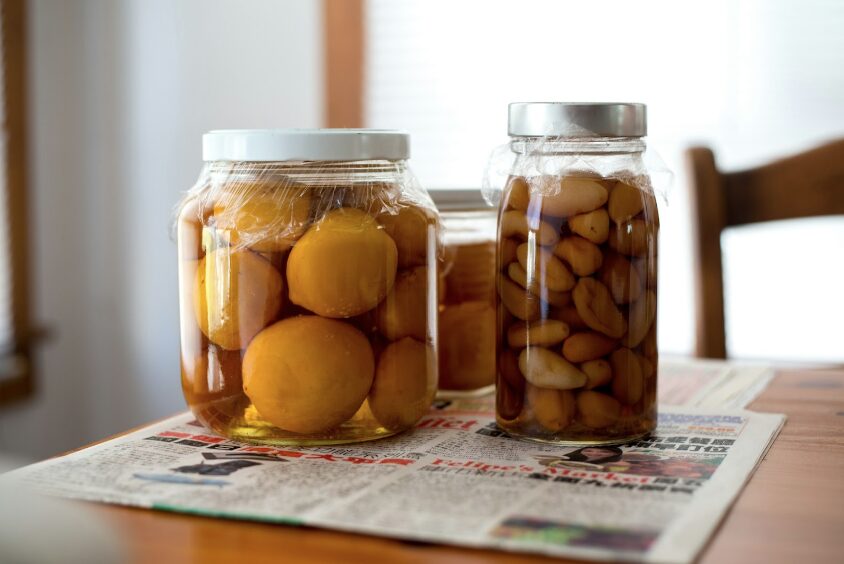Have you ever wondered how our grandparents kept their food fresh without the luxury of refrigerators? Maybe you’re looking for ways to prep for emergencies or are interested in off-grid living.
In this blog, you’ll learn 5 food preservation techniques that don’t require refrigeration that our ancestors used, and they are not only practical but also effective.
These five time-tested methods will help you keep your food fresh and tasty, with no plugs required!
1. Canning: Bottling Up Goodness
Remember those jars of homemade jam at Grandma’s house? That’s canning in action! This method has been around since the early 1800s and is still going strong.
Water Bath Canning
This is perfect for high-acid foods like fruits, tomatoes, and pickles. Here’s the gist:
1. Clean and prepare your food
2. Pack it into sterilized jars
3. Cover with boiling water or syrup
4. Seal the jars and process them in boiling water
Pressure Canning
For low-acid foods like meats and most vegetables, pressure canning is the go-to method. It’s similar to water bath canning, but you’ll use a special pressure canner to reach higher temperatures.
Pro tip: Always check your jar seals after canning. Who wants to go through all of the work only to end up with spoiled food?
2. Dehydration: Sucking Out the Moisture
Dehydration is all about removing moisture from food, making it inhospitable for bacteria. It’s great for fruits, vegetables, and even meats!
Sun Drying
This recipe is perfect for sunny climates! Lay out your sliced fruits or herbs on a clean surface and let the sun do its magic. Just make sure to bring them in at night to avoid dew.
Air Drying
No sun? No problem! Hang herbs or thinly sliced meats in a well-ventilated area. This method works wonders for making your own beef jerky or dried herbs.
Solar Dehydrators
Want to step up your game? Build or buy a solar dehydrator. It’s like a greenhouse for drying food, using the sun’s heat and airflow to speed up the process.
3. Fermentation: The Art of Controlled Spoilage
Don’t let the word “spoilage” scare you – fermentation is how we get delicious foods like yogurt, cheese, and sauerkraut!
Vegetable Fermentation
Sauerkraut, anyone? Chop up some cabbage, add salt, and let the good bacteria work their magic. The same principle applies to pickles and other veggies.
Dairy Fermentation
Yes, you can make yogurt without electricity! Mix milk with store-bought yogurt (for the cultures) and keep it warm for a few hours. Voila! You have homemade yogurt!
Remember, successful fermentation should smell tangy, not rotten. When in doubt, throw it out!
4. Root Cellaring: Nature’s Refrigerator
Root cellaring is perfect for root vegetables, apples, and even some squashes.
Building a Root Cellar
You don’t need a fancy setup. A cool, dark corner of your basement can work wonders. Maintaining a consistent temperature (around 32-40°F) and humidity (85-95%) is key.
Arrange your veggies carefully—some produce (like apples) gives off gases that can spoil others. A little research goes a long way in proper storage!
5. Salting and Smoking: The Perfect Pair
These methods have been used to preserve meats and fish for centuries, and for good reason—they’re effective and add amazing flavor!
Salting
Salting draws out moisture from food, preventing bacteria from being able to grow. It’s great for meats and fish. Just remember, a little salt goes a long way!
Smoking
Smoking not only preserves food but also imparts a delicious smoky flavor. You can cold smoke (below 85°F) for preservation or hot smoke for both preservation and cooking.
There it is…five fantastic ways to keep your food fresh without relying on electricity. Whether you’re prepping for emergencies, living off-grid, or just want to try something new, these methods are worth exploring.
There’s something incredibly satisfying about preserving your own food using time-honored techniques. So which method are you excited to try first?
8 Money Saving Refrigerator and Freezer Hacks


